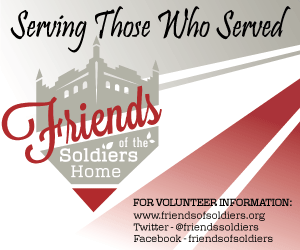Councilmember's Corner: Why I support the Dance Loft affordable housing project
/Rendering of the proposed development on the 4600 block of 14th Street NW.
by Janeese Lewis George
Ward 4 Councilmember
Growing up in Ward 4, my neighborhood block was like a village.
I knew the name of all of my neighbors, and our families looked after each other. All the other children on my block were considered my cousins – whether we were related or not – and we all went to the same school together. Our neighborhoods were places where working-class families could afford to live. My neighbor three doors down was a WMATA bus driver. Across the street, my history teacher. At my home, my mother supported our family as a postal worker. The togetherness of our neighborhoods was what sustained our city even in less prosperous times.
One day, that started to change. It happened block by block – first slowly, and then faster. Families would pack their bags and leave for Montgomery County, Prince George’s County, and other distant corners of the DMV. Some families even moved to the South. The destination varied, but the story was always the same: “We cannot afford to stay here.”
Over time, entire communities were uprooted, and by the time we realized what was happening it was too late. Eventually, relentless rent hikes forced my family out of my childhood home too, and we would have lost our next home as well had we not been able to exercise our TOPA rights. The DC Council later repealed TOPA rights for single-family homes in 2018. This pattern has been repeating in neighborhoods across DC for decades. US Census data documents the displacement of tens of thousands of Black and working-class residents who called DC home.
Today, DC faces a staggering affordable housing crisis. The workers who serve this city are priced out of living in most of our neighborhoods, and homeownership is a distant dream for many lifelong DC residents. The skyrocketing cost of living here is fueling our homelessness crisis, eviction crisis, foreclosure crisis, and displacement crisis.
The core DC value of being a welcoming city is undermined by housing prices that systematically push people out and keep people out.
When I learn about proposed developments in Ward 4, the first thing I do is I look at the numbers and ask, “How will this project impact our affordable housing crisis?”
In this regard, the Dance Loft project stands out. The project will deliver 101 new housing units to our community. While multifamily projects typically only set aside 15%, 10%, or the legal minimum of 8% of units to be affordable, Dance Loft dedicates 66% of its units as affordable – raising the bar for affordability in Ward 4. All too often, developers try to maximize profit by only building studio and one-bedroom apartments, but this project delivers 40 new two-bedroom and three-bedroom apartments that will support families in our community.
In recent years, we’ve seen DC consistently fail to produce enough housing that's affordable for our lowest income residents. This project delivers these desperately-needed units by allocating 24 of these units at the deeply affordable level of 30% median family income or less for the families who need it most. And unlike other developments where affordability expires after a set number of years, these units will remain affordable in perpetuity.
These aren’t just numbers and percentages; they represent real DC families that will have an affordable home because of this project.
Twenty four affordable units at 60% of median family income can become homes for teachers, social workers, librarians, and health care workers. 19 affordable units at 50% of median family income can house firefighters, postal workers, bus drivers, construction laborers, and waiters and waitresses. And 24 affordable units at 30% of median family income can provide housing to child care workers, hotel housekeepers, grocery store cashiers, home health aides, and custodians in our city and their families.
As a Councilmember, I repeatedly see how agencies’ inability to fill vacancies impacts city services. Everything from trash collection and leaf removal to reliable public transit and mental health support in our schools is affected by this root problem. I cannot help but wonder how much DC’s struggle to staff up comes down to workers being priced out of the city they’re asked to serve. We can be a city that working families can afford to live in again, but it requires projects like this one that move the needle on affordable housing. It also means doubling down on the untapped tools we have to prevent displacement: expanding rent control, strengthening TOPA rights, creating more community land trusts, and producing social housing.
Beyond affordable housing, this project offers additional community benefits.
It will deliver a new rehearsal and performance space for Dance Loft, a local performing arts company that also offers community classes and whose current facility is falling apart. The new building will also include three retail spaces on the ground level, adding to commerce and vitality in the neighborhood. The building will be located on the 4600 block of 14th Street, a priority transit corridor. Three popular MetroBus routes – the 52, 54, and 59 – stop on this very block. In addition, the new building is designed to have net-zero carbon emissions and incorporates other sustainable elements in its design – earning LEED Gold certification from the US Green Building Council. Transit-oriented, climate-neutral housing is critical in our efforts to confront climate change.
I have also been fighting to secure accommodations for the existing retail tenants, which is one of our community’s concerns about the project. It will be two years before the project breaks ground, and the developer has agreed to extend businesses’ leases until that point. Each business will receive at least 12 month’s notice before construction begins to allow time for a smooth transition. The developer has also agreed to support businesses that want to stay in the neighborhood with identifying a new space, including coordinating retail site visits and legal support. Once construction is completed, businesses that wish to return to the Dance Loft building will be prioritized for the new retail spaces – as long as the community is on board, too. I’m committed to providing more support for these businesses alongside our Uptown Main Street Association.
I’m not exaggerating when I share that I have heard from hundreds of residents about Dance Loft, and my team and I have dedicated more time to engaging our community around this project than any other in Ward 4. We’ve had several site visits, looked at alternative designs, and even visited similar developments to get a better sense of the proposed scale. I understand neighbors’ concerns and respect the neighbors who have voiced them. But the alternative of shrinking or redesigning the building would ultimately yield less affordable housing – by producing fewer market-rate apartments to subsidize affordability, or making the building uncompetitive for public funding, or forcing a far costlier construction method.
Every unit of affordable housing that we produce or preserve will make the difference in whether a neighbor of ours has an affordable home. This project is delivering nearly half of all the deeply affordable housing units in the pipeline for Ward 4 of all the deeply affordable housing units in the pipeline for Ward 4. And this is one of only two DHCD affordable housing projects in all of Sixteenth Street Heights, a neighborhood where the average single-family home is valued close to $1 million. Families that would have otherwise been displaced from our city, severely rent burdened, or possibly even left homeless will have a permanent home through this project.
These families are not part of the conversation, but they will be the most impacted by what is decided.
There is a long, dark history of discriminatory housing policies being used to exclude people of color. Governments redlined entire neighborhoods, deeming them too “risky” to merit home purchasing loans. They used eminent domain to seize valuable land and expel Black communities who lived there. And they implemented exclusionary zoning and land use laws that made it illegal to build the type of housing that many people of color could afford. Black veterans who returned from serving overseas were denied the low-cost mortgages that were promised to them by the GI Bill. These policies segregated DC and cities across the United States, and their repercussions still linger today.
Today, many people don’t associate individual zoning decisions with this history of racism. And opposition to individual developments is often rooted in reasons that are specific to that neighborhood. Still, the cumulative effect of blocking, delaying, or downsizing affordable housing projects is the same: poor and working-class people, often people of color, end up being priced out of our communities.
We can unwind the catastrophic legacy of housing segregation and stem the tide of displacement in the District, but it means welcoming affordable housing even in cases where it inconveniences us – in addition to all the benefits that it brings.
Our Sixteenth Street Heights community has worked hard over decades to make improvements to the neighborhood. Those improvements include modernizing John Lewis Elementary and Dorothy Height Elementary, the upcoming renovation of Upshur Recreation Center, traffic safety improvements, revitalizing the 14th Street corridor, and much more. All of these benefits should be shared by everyone – not just those who can afford to remain in the neighborhood. Affordability is essential for preserving the community of people that made Sixteenth Street Heights such a great place to live. I realize that I will pay a political price for my position, but leadership is about standing up for what’s right even when it’s contentious. That’s what it’s going to take to confront our dire affordable housing crisis. I’m grateful for every member of our community, and I know that no matter where each of us sides on this project, we will all welcome our new neighbors with open arms – because that’s the kind of community that we are.



















